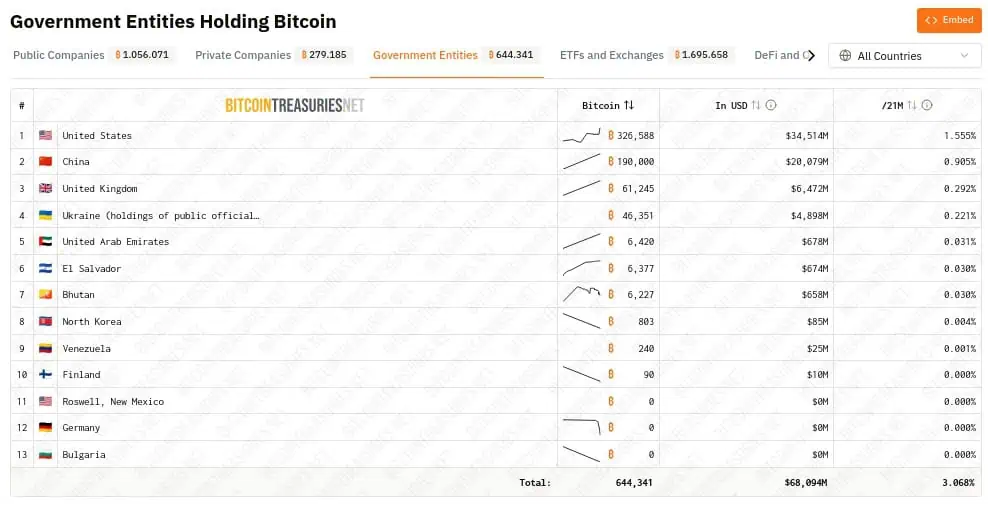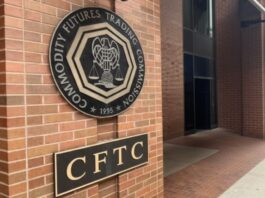
The Trump administration is pushing a plan to turn the US into the crypto capital of the world, combining new regulations, a strategic reserve, and economic stimulus.
With a national debt that exceeds 34 trillion dollarsThe Trump administration has unveiled a bold strategy: to make the United States the global epicenter of cryptocurrencies and use digital assets as leverage to restructure its economy. The plan combines direct stimulus, a strategic reserve of crypto assets, and a new regulatory architecture that redefines the role of the state in the blockchain ecosystem.
Bit2Me connects you with Bitcoin and the crypto worldThis week, Bitcoin has surpassed $105.000, and altcoins like WLFI are registering daily gains of over 40%. The catalyst has been the tariff dividend announced by Trump, who promises to give at least $2.000 to citizens. Markets interpret this action as an injection of liquidity that not only stimulates consumption but could also strengthen demand for digital assets if some of these funds are channeled into crypto platforms.
But this dividend is just the tip of the iceberg. Since the beginning of 2025, the US has implemented a radical shift in its digital asset policy, moving from skepticism to a leadership strategy. The goal, according to Trump himself, is to use cryptocurrencies as backbone of a new economy capable of absorbing debt, attracting investment and consolidating technological sovereignty.
The government's new stance, which contrasts sharply with its previous administration, is based on flexible but ambitious regulation, designed to attract capital, foster innovation and maintain the dollar's position as a global benchmarkIn this context, cryptocurrencies are not just a financial tool: they are the axis of a geoeconomic narrative that seeks to redefine American power in the digital age.
The US is building a new pro-crypto regulatory architecture
The transformation of American policy began to solidify with a clear message to industry: the era of The regulatory "iron fist" is overThe current administration maintains that the previous approach stifled innovation and drove companies and developers to foreign jurisdictions. To reverse this trend, a major restructuring of key agencies has been underway.
Trump promotes Bitcoin: trades through Bit2MeThe Securities and Exchange Commission (SEC) has been a central focus. With the appointment of figures such as Paul Atkins as president of the agency and Hester PeirceKnown for her pro-industry stance as head of the Digital Assets Working Group, it's clear the agency is seeking a more collaborative approach. Furthermore, this new approach was formalized in July with the approval of the "GENIUS Act", a landmark piece of legislation that establishes, for the first time, a clear and federal regulatory framework for stablecoins in the country.
For industry analysts, the GENIUS Act is the cornerstone of the plan. By regulating stablecoins, the government not only provides the certainty that large financial institutions required to operate, but also It ensures that the infrastructure for the digitized dollar is developed within its borders and under its supervision.In other words, it is a movement that seeks to modernize the financial system, aligning it with the demands of the digital age without relinquishing control.
The largest sovereign-level Strategic Bitcoin Reserve
Alongside the modernization of the rules, the US government has become a direct player in the market. In March 2025, an executive order It established the creation of a Strategic Reserve of Crypto Assets for the countryThis reserve is not funded by direct purchases, but by digital assets seized by the Treasury Department in criminal and civil forfeiture proceedings.
Today, the U.S. Treasury's digital vaults store significant amounts of Bitcoin (BTC), in addition to other cryptocurrencies like Ethereum (ETH). Data from platforms such as Bitcoin Treasuries indicates that the country owns 326.588 BTC, valued at more than $34.500 million dollars. Likewise, cryptocurrencies such as Ripple (XRP), Solana (SOL) and Cardano (ADA) are also part of Trump's plan for the crypto strategic reserve.
The creation of this reserve sends an unequivocal signal: the United States considers these assets strategic enough to maintain them in its sovereign balance sheet, a move similar to that which has historically been made with gold reserves.

Source: Bitcoin Treasuries
The state's adoption of cryptocurrencies like Bitcoin stands in stark contrast to the administration's stance on so-called Central Bank Digital Currencies (CBDCs)Trump has been clear in prohibiting the issuance of a "digital dollar" managed by the Federal Reserve, arguing that such a tool would violate citizens' financial privacy. This prohibition, included in the president's executive order, implicitly favors private stablecoins, now regulated by the GENIUS Act.
In addition, the plan includes a strong support for Bitcoin mining in US territory, encouraging the concentration of network infrastructure within the country, with the aim of securing not only the assets, but also control over the networks that support them.
The digital transformation of America
The United States' approach to cryptocurrencies is undergoing a profound shift. Beyond simply regulating the market, the Trump administration is driving a complete economic transformation, using digital technologies as its backbone. With a national debt exceeding $34 trillion, the strategy is to position the country as the epicenter of the decentralized financial future.
This shift in Trump's stance, from skepticism to active support of the crypto sector, is not merely a tactical move, but also driven by geopolitical objectives. For Washington, leading in the digital and financial arena is not an option, but a strategic necessity to rebuild its economic power and address its historical liabilities from a position of strength.
Enter crypto safely and compliantly here


